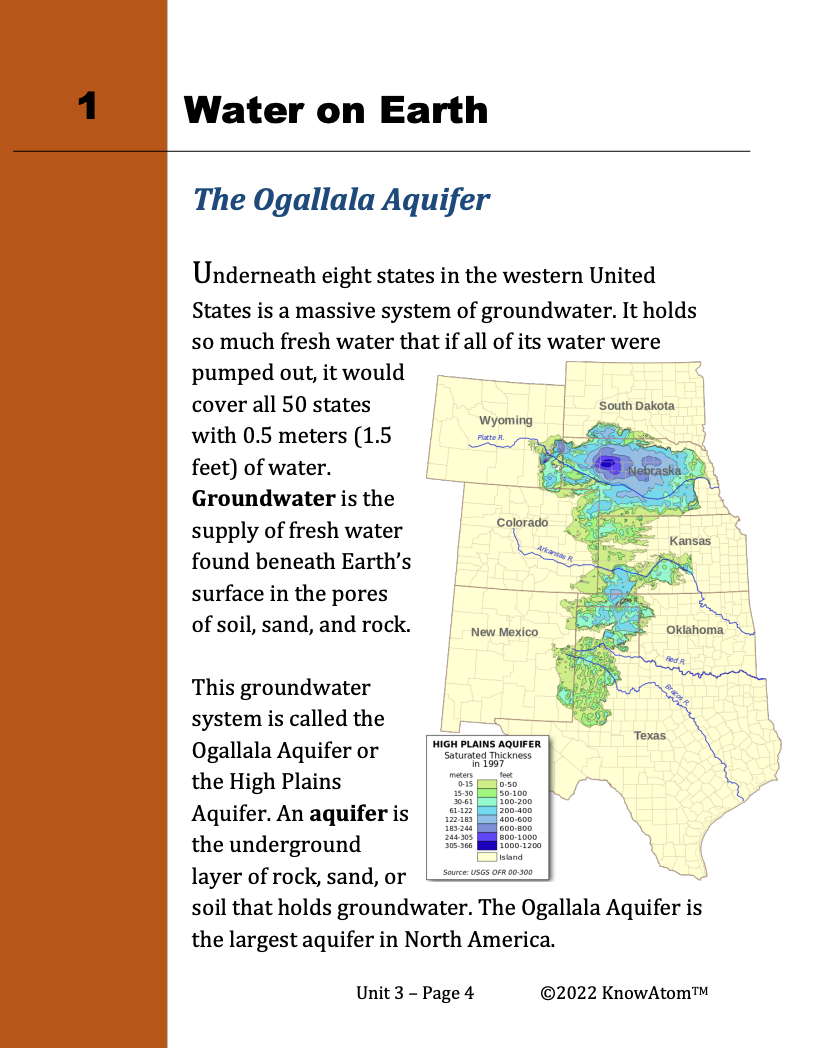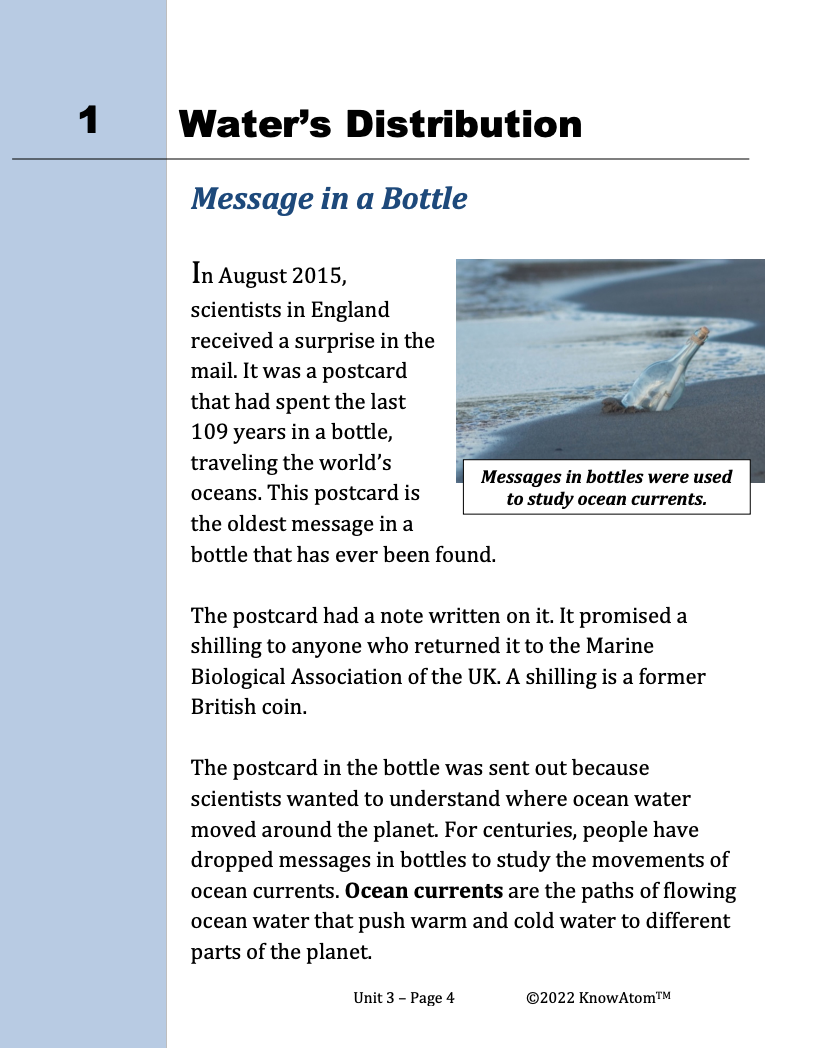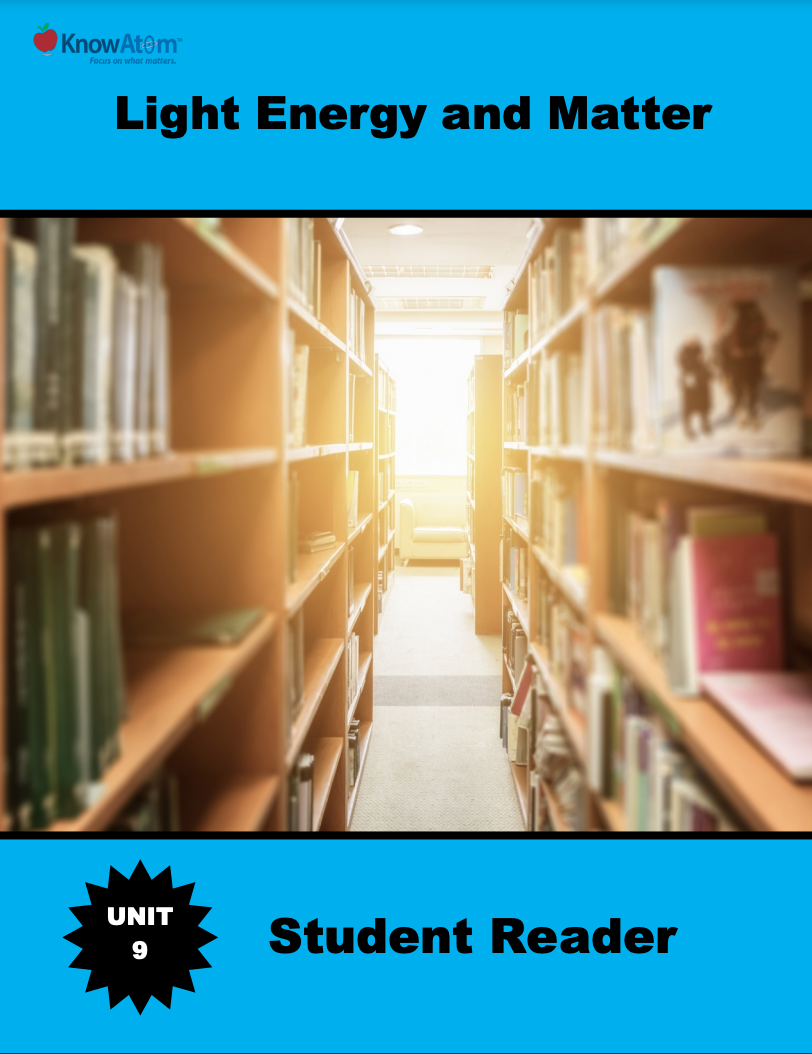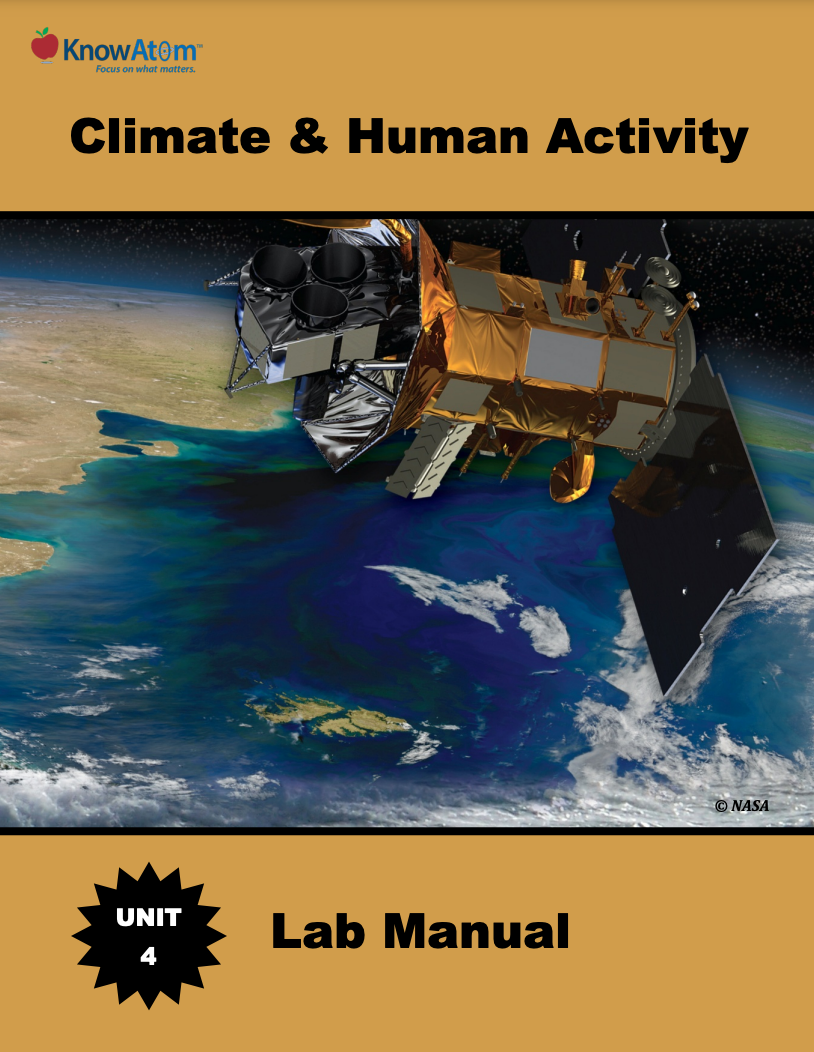
In this unit, students focus on Earth’s interacting systems, evaluating how the hydrosphere and geosphere are shaped by one another. In this lesson, they analyze how people use dams to harness the energy in water, and how dams impact the environment. This page highlights each element of this lesson.
.png)
In this unit, students focus on interactions between the hydrosphere and the geosphere as they explore the phenomena of groundwater in human development. For this lesson, they engineer a water filtration device to treat samples of simulated polluted stormwater runoff. This page highlights key components of this lesson.

In the second unit of Kindergarten, students explore living things and discover what plants and animals need to survive. This page provides a snapshot of lesson five which has students conducting a class experiment with bean plants to observe what they need to live and grow.

In this unit, students are introduced to living things on Earth. They begin by exploring the differences between living and nonliving things and then investigate what plants and animals need to survive in their habitats. Now students take their understanding of animal habitats to then apply their understanding of the topic to consider how human shelter varies depending on where we live.

In the second unit of Kindergarten, students explore living things on Earth. They analyze the differences between living and nonliving things and then investigate what plants and animals need to live and grow. Following this, students explore human needs and activities and how those impact the planet.

In this unit, students figure out phenomena of Earth’s interacting systems, focusing on how the hydrosphere interacts with and is influenced by the other systems. In this lesson, students apply their scientific knowledge of Earth’s water system to engineer water filtration devices to figure out how to reduce the impacts of water pollution on the environment. This page provides an overview of key aspects of this lesson.

In this unit, students focus on light energy, investigating the science phenomena of how light moves when it interacts with different kinds of matter. Students use scientific knowledge about light to engineer a device that uses mirrors to redirect light. This page is a high-level extract of this lesson.

In this unit, students build on their scientific knowledge about matter, energy, and heat transfer to explore the phenomena of weather and climate. They investigate how the sun powers the global water cycle, which in turn has very local impacts that affect the phenomena of regional climates around the world. They then use that knowledge to figure out and design a technology that solves the problem of drought-related water shortages.
Standards citation: NGSS Lead States. 2013. Next Generation Science Standards: For States, By States. Washington, DC: The National Academies Press. Neither WestEd nor the lead states and partners that developed the Next Generation Science Standards were involved in the production of this product, and do not endorse it.
